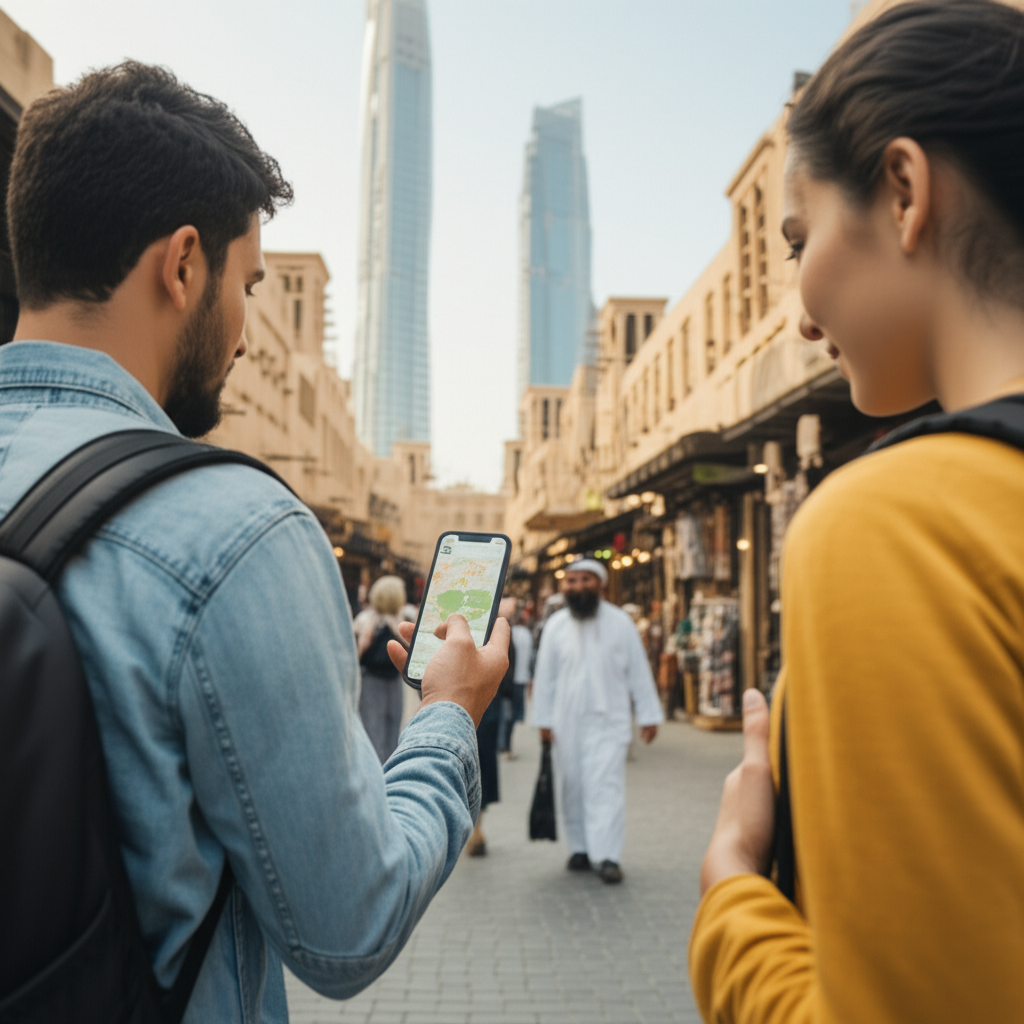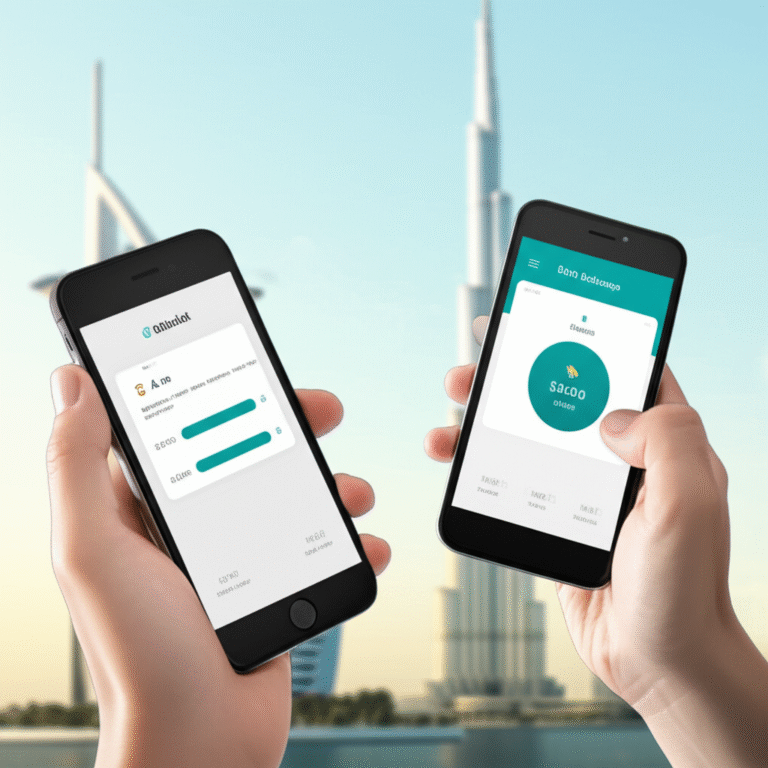Yes, you absolutely can use your US phone in Dubai! With the right preparation, staying connected is simple and affordable. This guide will show you how to make your US phone work seamlessly in the UAE.
Can I Use My US Phone in Dubai: Your Essential Guide to Staying Connected
Planning a trip to Dubai or moving here from the US? A common question many have is, “Can I use my US phone in Dubai?” The answer is a resounding yes! It’s perfectly possible to use your familiar smartphone in the vibrant city of Dubai. However, to avoid unexpected charges or connection issues, it’s crucial to understand a few key things. Many travelers worry about roaming fees or whether their phone will even work. Don’t let this concern dampen your excitement! This guide is designed to be your go-to resource, offering clear, step-by-step advice to ensure your US phone connects smoothly and affordably throughout your stay in Dubai.
Contents
Understanding Your Options: Roaming vs. Local SIM
When you arrive in Dubai with your US phone, you essentially have two main paths to staying connected: using your existing US carrier’s international roaming plan or getting a local UAE SIM card. Each has its own set of advantages and considerations, especially when it comes to cost and convenience.
Option 1: International Roaming with Your US Carrier
Most major US mobile carriers offer international roaming packages. This means you can often use your existing phone number and data plan while in Dubai. It’s usually the most convenient option as it requires no physical changes to your phone, and you keep your familiar number.
Pros of Roaming:
- Convenience: No need to swap SIM cards or change phone settings significantly.
- Familiar Number: You keep your US number, making it easy for contacts back home to reach you.
- Instant Connectivity: Often works automatically upon arrival, provided you’ve activated the plan.
Cons of Roaming:
- Cost: This is typically the most expensive option. Daily or monthly charges for data, calls, and texts can add up very quickly, often costing significantly more than local alternatives.
- Data Caps: Plans might have strict data limits, and exceeding them can lead to exorbitant charges or drastically reduced speeds.
- Limited Control: You have less direct control over your usage and spending compared to a local SIM.
How to Prepare for Roaming:
- Contact Your US Carrier: Before you leave the US, call your mobile provider (e.g., Verizon, AT&T, T-Mobile, Sprint).
- Inquire About International Plans: Ask specifically about their plans for the UAE or Dubai. They might offer daily, weekly, or monthly packages that bundle data, calls, and texts.
- Understand the Details: Clarify the data allowance, call/text rates (both for local UAE numbers and calling back to the US), and any potential overage charges.
- Check Phone Compatibility: While most modern smartphones are compatible, it’s wise to confirm with your carrier that your specific device model is supported for international roaming in the UAE.
Option 2: Getting a Local UAE SIM Card
This is often the most cost-effective and practical solution for longer stays or for those who want unlimited access to local services. The UAE has two main mobile network operators: Etisalat and DU. Both offer excellent coverage and competitive prepaid and postpaid plans.
Pros of a Local SIM:
- Affordability: Significantly cheaper for data, calls, and texts compared to international roaming. You get much more value for your money.
- Abundant Data: Local plans often offer generous data allowances, perfect for browsing, streaming, and social media.
- Local Number: You’ll have a UAE phone number, which can be useful for local services, ride-sharing apps, and making local calls.
- Flexibility: You can easily choose prepaid plans that you top up as needed, or opt for monthly postpaid plans.
Cons of a Local SIM:
- Requires SIM Swap: You’ll need to physically replace your US SIM card with the UAE one. This means your US number won’t be active for calls or texts unless your phone supports dual SIM or eSIM.
- Initial Setup: Might require a visit to a store or a bit of setup on your phone.
- Document Requirement: You’ll need your passport and potentially a visa copy to purchase a SIM card.
How to Get a Local SIM in Dubai:
- Choose an Operator: Decide between Etisalat or DU. Both have extensive networks.
- Visit an Official Store: The easiest way is to go to an Etisalat or DU retail store, usually found at the airport upon arrival, in major shopping malls, or in city centers.
- Bring Your Documents: You will need your passport for identification. Tourists may also need to show their visa stamp or a copy. Residents will need their Emirates ID.
- Select a Plan:
- Prepaid SIM (Visitor/Tourist Packages): These are readily available and often come with a set amount of data and call minutes for a specific validity period (e.g., 7 days, 10 days, 1 month). They are ideal for short-term visitors.
- Standard Prepaid SIM: You can purchase a standard prepaid SIM and then buy recharge vouchers or data packs as needed. This offers more flexibility.
- Postpaid Plans: For longer stays, a postpaid plan might offer better value, but usually requires a local bank account or a substantial deposit.
- Activation: The store staff will typically help you activate the SIM and set up your chosen plan. You may need to make a test call.
Is My US Phone Compatible with UAE Networks? (GSM vs. CDMA & Band Support)

This is a critical technical question, but don’t worry, it’s simpler than it sounds! For your US phone to work in Dubai, it needs to be compatible with the frequency bands used by UAE mobile networks. The good news is that most modern smartphones are built with global compatibility in mind.
Understanding Network Technologies:
- GSM (Global System for Mobile Communications): This is the dominant technology used worldwide, including in the UAE and by most US carriers (like AT&T and T-Mobile). If your phone is GSM, it’s very likely to work with a local UAE SIM.
- CDMA (Code Division Multiple Access): This technology was historically used by carriers like Verizon and Sprint in the US. While many CDMA phones also support GSM bands, some older or carrier-locked CDMA-only phones might have compatibility issues.
Checking Band Support:
Mobile networks operate on specific frequency bands. For the best coverage in Dubai, your phone should support the following common bands used by Etisalat and DU:
- 3G: 900 MHz, 2100 MHz
- 4G LTE: 850 MHz, 900 MHz, 1800 MHz, 2100 MHz, 2300 MHz
How to Check Your Phone’s Compatibility:
- Check Your Phone’s Specifications: The easiest way is to search online for your specific phone model’s specifications. Websites like GSMArena are excellent resources. Look for the “Network” or “Bands” section.
- Contact Your Carrier: Your US mobile provider can tell you if your phone is unlocked and compatible with international networks.
- Carrier Unlock: Ensure your phone is “unlocked.” An unlocked phone is not tied to a specific carrier and allows you to use SIM cards from any provider. If your phone is still under contract or locked, contact your US carrier to request an unlock. This is a legal right in the US after fulfilling contract obligations.
Key Takeaway:
Most newer smartphones (especially those purchased unlocked or from GSM carriers) will work seamlessly in Dubai. If you have a CDMA-only phone or a very old device, it’s worth double-checking the band support and unlock status.
Choosing a UAE Mobile Provider: Etisalat vs. DU
Both Etisalat and DU are major players in the UAE telecom market, offering reliable services. For tourists and new residents, understanding their offerings for prepaid plans is key.
Etisalat:
Etisalat is the older and often considered the most established network in the UAE. They typically offer strong network coverage across the country, including in more remote areas.
- Strengths: Excellent nationwide coverage, often perceived as having slightly faster speeds in some areas, wide range of prepaid and postpaid options.
- Tourist Packages: Etisalat offers specific prepaid packages for visitors, often bundled with data and minutes, available at airports and retail outlets.
DU:
DU is the second-largest telecommunications provider in the UAE, also offering comprehensive services and competitive pricing. They have been actively expanding their network and improving coverage.
- Strengths: Competitive pricing, good network coverage, user-friendly app for managing services, attractive bundled offers.
- Tourist Packages: Similar to Etisalat, DU provides prepaid SIM cards and packages tailored for tourists, easily accessible upon arrival.
Comparison Table: Typical Tourist SIM Offerings (Prices are approximate and subject to change)
| Feature | Etisalat Tourist SIM (Example) | DU Tourist SIM (Example) |
|---|---|---|
| Validity | 7 Days or 15 Days | 7 Days or 15 Days |
| Data | e.g., 1GB or 3GB | e.g., 1GB or 3GB |
| Local Calls/Texts | e.g., 100 minutes/texts | e.g., 100 minutes/texts |
| Price (Approx.) | AED 55 – 75 (~$15 – $20 USD) | AED 55 – 75 (~$15 – $20 USD) |
| Activation | At Airport/Retail Store | At Airport/Retail Store |
Note: It’s always best to check the latest offers directly at the Etisalat or DU counters at Dubai International Airport (DXB) or their official websites for the most up-to-date packages and prices.

Once you have your US phone in Dubai, whether you’re roaming or using a local SIM, here are some practical tips to ensure a smooth experience:
Using a Local SIM: Quick Setup Guide
If you opt for a local SIM, the process is generally straightforward:
- Power Off Your Phone: Turn off your device before removing your US SIM card.
- Remove US SIM: Use a SIM ejector tool (often found in your phone’s box) or a small paperclip to gently push the SIM tray release button.
- Insert UAE SIM: Place the new UAE SIM card into the tray, ensuring it’s oriented correctly, and reinsert the tray into your phone.
- Power On: Turn your phone back on.
- Follow On-Screen Prompts: Your phone might automatically detect the new network. You may need to enter a PIN if provided with the SIM.
- Configure APN (Rarely Needed): In most cases, your phone will automatically configure the Access Point Name (APN) settings for data. If you have trouble connecting to the internet, you might need to manually enter APN settings. You can usually find these on the Etisalat or DU website or by asking customer service.
- Check Balance and Buy Data: Use the carrier’s USSD codes (like 121# for Etisalat or 135# for DU) or their mobile app to check your balance and purchase additional data or call credit.
Managing Your Account & Costs:
- Download Carrier Apps: Install the official Etisalat UAE or DU App on your smartphone. These apps are invaluable for monitoring data usage, checking balances, recharging your account, and purchasing add-on packs.
- Monitor Data Usage: Keep a close eye on your data consumption, especially if you’re on a limited prepaid plan or a roaming package. Most apps provide real-time usage statistics.
- Use Wi-Fi When Possible: Dubai has excellent public Wi-Fi available in malls, cafes, airports, and hotels. Utilize these free Wi-Fi hotspots to conserve your mobile data.
- Dialing Codes: Remember that to call a local Dubai number from another Dubai number, you usually just dial the 8-digit number. To call a US number from Dubai, you’ll use the international dialing prefix (+ or 00), then the country code (1), then the area code and number.
Where to Buy SIM Cards:
Dubai International Airport (DXB): Both Etisalat and DU have kiosks or counters in the arrivals halls of all terminals. This is the most convenient place to get a SIM card immediately after landing.
Shopping Malls: You’ll find official stores for both Etisalat and DU in major shopping centers like The Dubai Mall, Mall of the Emirates, and Ibn Battuta Mall.
City Retail Stores: Numerous smaller retail outlets also sell Etisalat and DU SIM cards and recharge vouchers.
eSIM Options in Dubai
For those with newer phones that support eSIM technology, this offers an even more streamlined experience. An eSIM is a digital SIM that’s embedded in your device, meaning you don’t need a physical card.
Benefits of eSIM:
- No Physical Swap: Activate a new plan instantly by scanning a QR code or through your phone’s settings.
- Dual SIM Capability: You can keep your US physical SIM in your phone while activating a UAE eSIM, allowing you to use both numbers simultaneously. This means you can receive calls/texts on your US number while using UAE data.
- Convenience: Purchase and activate plans online before you even arrive in Dubai.
How to Get an eSIM in Dubai:
- Check Phone Compatibility: Ensure your US phone supports eSIM functionality.
- Check Carrier Offerings: Both Etisalat and DU offer eSIM options. You can often purchase these directly from their websites or apps.
- Purchase a Plan: Select a prepaid tourist plan or a standard prepaid plan that supports eSIM activation.
- Activate: Follow the instructions provided by the carrier. This usually involves scanning a QR code or manually entering details into your phone’s cellular settings under “Add Cellular Plan.”
External Resource: For a comprehensive list of eSIM-compatible devices, you can refer to Apple’s support page for iPhones or Samsung’s support page for Galaxy devices, as these are the most common brands supporting eSIM.
Frequently Asked Questions (FAQ)
Q1: Will my US phone work in Dubai if it’s locked to my carrier?
A1: Generally, no. If your US phone is locked to your carrier (e.g., Verizon, AT&T), it will likely only work with that carrier’s SIM card. To use a local UAE SIM or an eSIM from Etisalat or DU, your phone must be unlocked. Contact your US carrier to unlock it before your trip.
Q2: How much does a local SIM card typically cost in Dubai?
A2: For tourists, prepaid SIM cards with a package of data and minutes usually cost between AED 55 to AED 75 (approximately $15 to $20 USD). These packages are valid for 7 or 15 days. Standard prepaid SIMs are cheaper, and you can then buy data bundles separately.
Q3: Can I keep my US phone number active while using a UAE SIM card?
A3: If you use a physical UAE SIM card, it will replace your US SIM, and your US number will be inactive for calls and texts unless your phone supports Dual SIM. If your phone supports eSIM, you can keep your US physical SIM and activate a UAE eSIM, allowing you to use both services concurrently.
Q4: What documents do I need to buy a SIM card in Dubai?
A4: For tourists, you will need your valid passport for identification. Some vendors might also ask for a copy of your UAE entry stamp or visa. Residents will need their Emirates ID.
Q5: Is it better to roam or buy a local SIM?
A5: For most travelers, buying a local SIM card or using an eSIM is significantly more cost-effective than international roaming. Roaming can be extremely expensive, especially for data. Local SIMs offer much better value for money.
Q6: Where can I find reliable information on Etisalat and DU plans?
A6: The most up-to-date information on plans, pricing, and coverage can be found on the official websites of Etisalat UAE (www.etisalat.ae) and DU (www.du.ae). You can also get assistance at their official stores and airport counters.
Conclusion
So, to answer the question, “Can I use my US phone in Dubai?” – absolutely! With a little preparation, you can ensure seamless connectivity throughout your visit. Whether you choose the convenience of international roaming with your US carrier (keeping a close eye on costs!) or the affordability and flexibility of a local UAE SIM card from Etisalat or DU, staying connected is entirely achievable. Remember to check if your phone is unlocked and compatible with the UAE’s network bands. For most, opting for a local SIM or eSIM provides the best balance of cost, data, and convenience. Enjoy exploring Dubai with the confidence that you can easily share your experiences, navigate the city, and stay in touch with loved ones.

